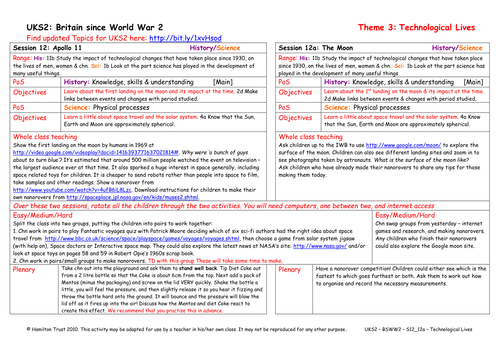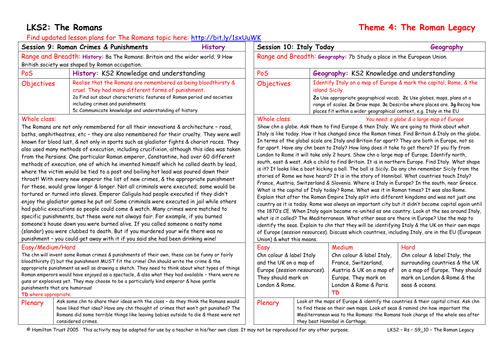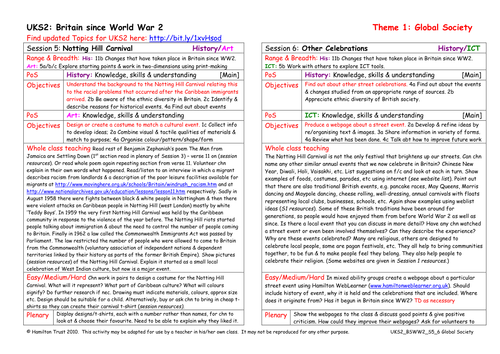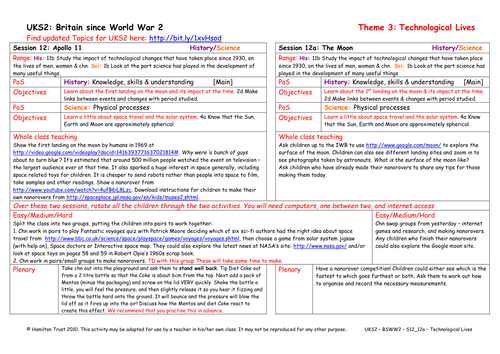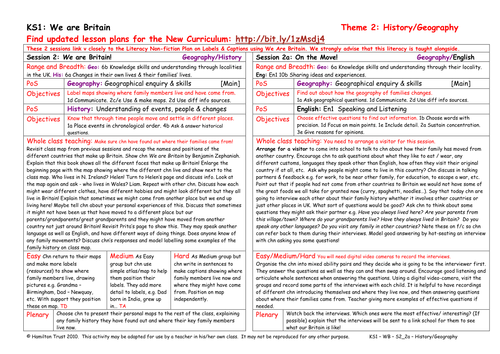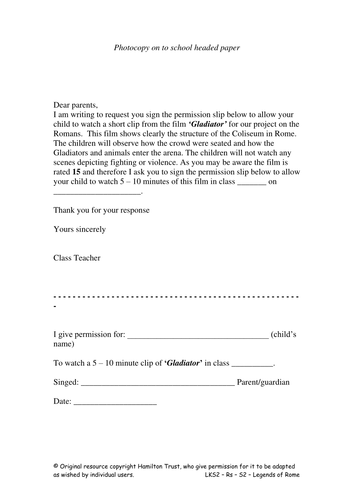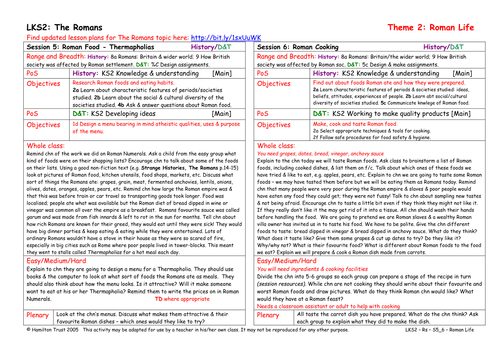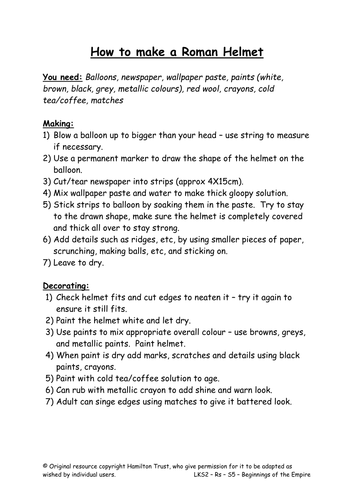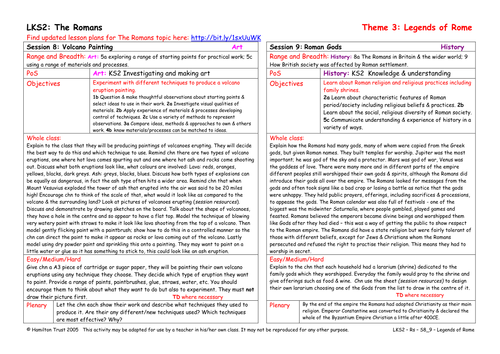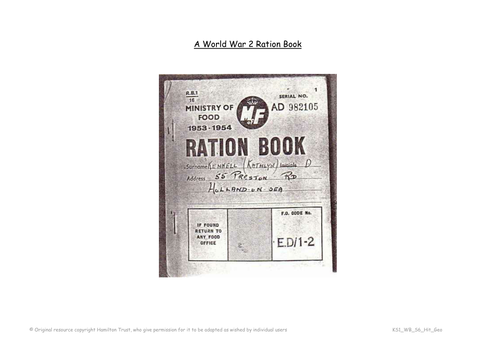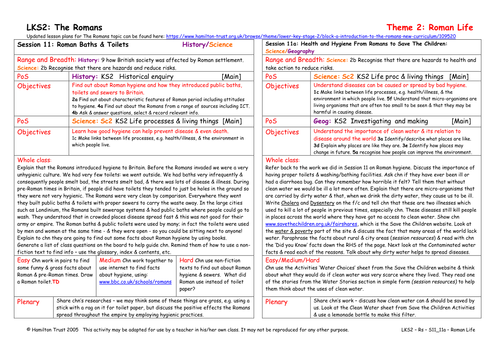
3k+Uploads
9988k+Views
11603k+Downloads
History

The Festival of Britain
Children watch TV footage and research the festival of Britain. They make a postcard of their favourite part and write a message on the back about what they liked.

Roman Soldiers: Decorating Shields
Following the start of making a Roman shield in Session 8, children complete their individual shields. They explore the different images and emblems that Roman soldiers used on their shields and design a class emblem for their Roman shields.
Suitable for years 3 and 4.
Find other lesson plans and resources at www.hamilton-trust.org.uk.

Apollo 11
Children watch the first manned landing on the moon, then build a nanorover or play online games about space travel.

Everything In Its Place
Children spot which items are out of place in a 1950s living room, and dress a character from each decade.

Romans: Crimes and Punishments
Children study further aspects of Roman culture, looking at what were considered crimes, and at forms of punishment. Children consider why the Roman empire had a reputation for cruelty, and then invent suitable punishments for specific crimes of their own!
Suitable for years 3 and 4.
Find other lesson plans and resources at www.hamilton-trust.org.uk.

Other Celebrations
Look at other celebrations that take place here now because of the different immigrants who have come to Britain. Children research one of these celebrations in groups and using Hamilton WebLearner children produce a web page to describe and explain it.

Present and Future Technology
Children discuss what technologies could be displayed in a 2012 exhibition in a similar way to the Festival of Britain in 1951, and then at a similar event in 3012.

1950s Art
Children look at 1950s sculptures by Barbara Hepworth and Henry Moore and make their own similar model from clay.

The Moon
Children explore the surface of the moon using a website, carry out the activity they didn’t do in session 12, then have a nanorover race.

TV Adverts
Children look at kitchen gadgets and early TV adverts and then work in groups to make up an advert for the first microwave, then act it out for the rest of the class.

On the Move
During this topic children delve into their family history. They find out more about each other by becoming an interviewer and asking questions about their different backgrounds.
Suitable for Years 1 and 2.
Find other lesson plans and resources at www.hamilton-trust.org.uk.

Making Aqueducts
Children create and complete their working model of an aqueduct using card painted with PVA glue or varnish and plastic pipe. After they are completed, children will try out their aqueducts to check that they really do carry the water. They are then evaluated.
Suitable for years 3 and 4.
Find other lesson plans and resources at www.hamilton-trust.org.uk.

Designing Aqueducts
Aqueducts are the subject of two session’s work. Children research aqueducts, understanding their purpose and also their construction.
They then begin to plan to make their own working model of an aqueduct, looking at the available materials.
Suitable for years 3 and 4.
Find other lesson plans and resources at www.hamilton-trust.org.uk.

Amphitheatres, the Colosseum
Children continue the work on the Coliseum in Rome. They find out about its history and then identify and locate this building in today’s Rome. Pointing out that it can be visited, chn look at tourist brochures and plan a visit!
Suitable for years 3 and 4.

Roman Food - Thermapholias
Children continue their researches into Roman everyday life, turning their attention to eating habits and food. They look at some of the foods and recipes of the Romans, and then design a Roman meal to be eaten in a Thermapholia.
Suitable for years 3 and 4.
Find other lesson plans and resources at www.hamilton-trust.org.uk.

Making Roman Helmets: Making Helmets
Following the work on soldiers in session 4, children study the helmets worn by different Roman soldiers. They identify similarities and differences and the reasons for these (age, rank, etc.) Then they plan to make a Roman soldier helmet in papier-mâché.
Suitable for years 3 and 4.
Find other lesson plans and resources at www.hamilton-trust.org.uk.

Roman Gods
Children study the history of religion in Roman times, looking at the Gods the Romans worshipped and at how they came to believe Emperors were divine. They look at festivals, including Saturnalia, and then design their own lararium (family shrine).
Suitable for years 3 and 4.
Find other lesson plans and resources at www.hamilton-trust.org.uk.

Rationing
Waste not want not! Children learn about how rationing was used in Britain and how this impacted on the average family. They use the BBC website to enter a virtual shop and use their ration book.
Suitable for years 1 and 2.
Find other lesson plans and resources at www.hamilton-trust.org.uk.

Roman Baths & Toilets
In this session children look at how the Romans improved hygiene arrangements across the empire by providing clean water and drains for sewage. Children investigate Roman toilets and baths, and discuss the positive effects of these innovations.
Suitable for years 3 and 4.

Roman army and busts
This block introduces the Roman Army. What was its organisation? What were the Roman soldiers like and why did so many Britons join the Roman army? Children learn about the army and then use this knowledge to help them understand how Roman busts differed from their Greek equivalent. They create their own Roman Bust in relief from clay.
Includes:
- Topic Overview
- Block Overview
- Lesson 01: Understanding why the Roman army was so powerful
Children learn about the Roman army and train together, being given orders by a centurion. They act out a battle.
- Lesson 02: Understanding the power of the Roman army through 3D art
Children explore some of the features of the Roman Army by looking at the differences between Roman & Greek busts.
- Lesson 03: Recording different facial expressions in sketchbooks and experimenting with clay
Children start to plan and design their Roman busts, thinking about the features and expression of a soldier in the Roman Army.
- Lesson 04: Creating a fierce depiction of themselves from clay
Children re-cap all they have learned about the Roman Army. Then they create a Roman bust in relief from clay.
Find more lesson plans and resources at www. hamilton-trust.org.uk.



